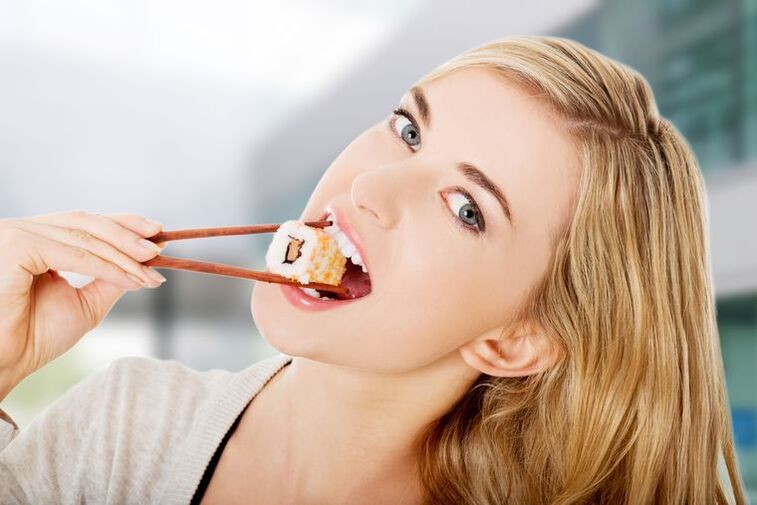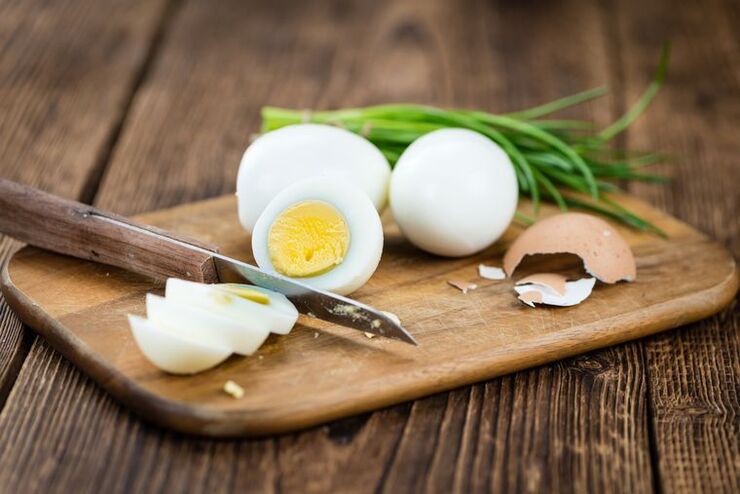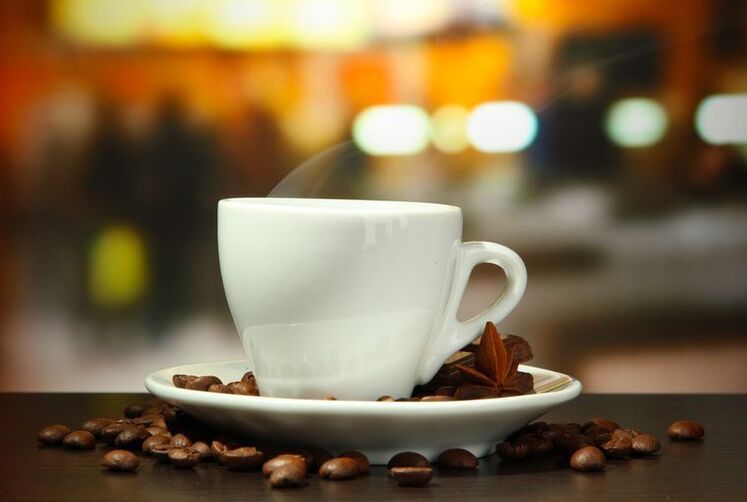Everyone knows the "Japanese" diet efficient from Megal.But few people know that they have options that allow the use of food products at all.What can be eaten on the "Japanese", read in the article.

The "Japanese" sleepless diet is a popular weight loss technique, has won the trust of many women and men because of its effectiveness.The principle of its action is low in protein, activating the combustion processes of fat deposits in the body.The traditional Japanese lasts 21 days: 7 days of preparation, 14 days of diet and a 4 -week output.
Most of the lost weight observes that this technique requires a psychological preparation and a strong motivation.However, the results are efforts: in 14 days ("classic" version) you can lose weight of 5-15 kg, depending on the original weight.In addition, the key step is to get out of the diet that requires no less exposure.If it does not violate the conditions, the problem of excess weight will remain in the past.
Rules
- Use only these products.
- The sequence of days and meals cannot be changed.
- The products of salt, sugar, alcohol, pastry and flour (except these) are completely excluded from the diet.
- Every day you should drink 1.5–2 liters of clean water without gas.
- If you don't use coffee, drink green tea without additives and flavors.
- Zucchini can be replaced with one of the following products: beets, pumpkin, boiled or fried carrots, Tsukkini, Pasternak root.This replacement will not affect the result of weight loss (subject to all rules).
- Zucchini (or alternative courgette vegetables) can be cooked in a sheet and is with the addition of the 1st teaspoon of vegetable or olive oil.
- A raw egg can be excluded or replaced with boiled meat.
- It is allowed to consume green tea or herbs between meals.
- Before starting, you need to consult a specialist.
- You can't repeat more than twice a year.
Professionals
- Effective weight loss in a short time.
- The availability of the products provided.
- A specific menu (not counting the food and energy value of the dishes).
- Three meals (easy to combine with study or work).
- The body is cleaned of toxins, because for two weeks it does not consume sugar, alcohol and salt.
- The squirrel is present in sufficient quantities - this prevents the loss of muscle mass.In addition, a lot of energy is spent for the digestion and assimilation of proteins, due to which the metabolism is accelerated.
Against
- Low caloric content of the diet.
- The unbalanced relationship of proteins, fats, carbohydrates and lack of basic vitamins, macro and trace elements.The consequence of this is a deterioration in the condition of skin, nails and hair, a decrease in immunity.Therefore, during the Japanese diet, complex vitamins must be taken.
- The lack of a complete breakfast deprives the body necessary for him in the morning of energy and increases the risk of an evening break.
- Great breaks between meals.
- The transition to normal nutrition can turn into a quick return.
Preparation
The preparation of the body is an integral phase of the diet without Japanese salt.A week before you start abandoning fast food, minimize the number of desserts, flour and fatty dishes, reduce normal portions of 20%-high speed daily speed of your diet should be reduced by 500 calories.Try to dinner at least three hours before bedtime and drinking at least 1.5 liters of clean water per day.After waking up, make sure you drink 250 ml of water at room temperature.This activates the metabolism and will better transfer the lack of breakfast during this period.
Menu
For 7 days
Day 1
- Breakfast: Black coffee.
- Lunch: 2 hard -boiled eggs, 150 g of salad (chip cabbage + carrots + 1 teaspoon of vegetable oil), 200 ml of tomato juice.
- Dinner: 150 g of boiled pollen, 100 g of chosen cabbage + 1 teaspoon of olive oil.

Day 2
- Breakfast: toast made of rye bread (15 g), black coffee.
- Lunch: 200 g of baked cod, 150 g of chosen cabbage + 1 teaspoon of vegetable oil.
- Dinner: 200 g of boiled beef, 200 ml of kefir (2.5% fat).
Day 3
- Breakfast: Black coffee.
- Lunch: 1 boiled egg, 150 g of grated carrots + 1 teaspoon of vegetable oil.
- Dinner: 2 apples.
Day 4
- Breakfast: toast made of rye bread, black coffee.
- Lunch: 1 medium courgette, fried in vegetable oil, 2 apples.
- Dinner: 200 g of boiled beef, 2 hard -boiled eggs, 150 g of chip cabbage.
Day 5
- Breakfast: 150 g of grated carrots with lemon juice.
- Lunch: 200 g of baked Hek, 200 ml of tomato juice.
- Dinner: 200 g of baked Hek, 150 g of chosen cabbage.
Day 6
- Breakfast: Black coffee.
- Lunch: 300 g of boiled chicken breast, 150 g of salad (chicine cabbage + carrots).
- Dinner: 2 hard -boiled eggs, 150 g of grated carrots + 1 teaspoon of vegetable oil.
Day 7
- Breakfast: green tea.
- Lunch: 200 g of boiled beef, 200 g of any fruit (per season).
- Dinner: one of the previous options.
For 9 days
The menu for 7 days of the 9 -day Japanese diet does not differ from the 7th day option.
Day 8
- Breakfast: green tea.
- Lunch: 200 g of boiled beef, 2 apples or 1 orange.
- Dinner: 200 g of baked Hek, 150 g of chosen cabbage.
Day 9
- Breakfast: Black coffee.
- Lunch: 200 g of salad (carrots + cabbage), 150 g of boiled chicken breast, 2 boiled eggs.
- Dinner: 150 g of grated carrots + 1 teaspoon of vegetable oil.
Products required for Japanese diet of 13 days and 14 days
- Natural coffee (in cereals or ground) - 1 package.
- Fresh eggs - 20 pieces.
- Fish fillet - 2 kg.
- Green tea without aromas - 1 package.
- Beef - 1 kg.
- Chicken pamante - 2 kg.
- Olive oil.
- Vegetable oil.
- Carrots - 2 kg.
- The cabbage is fresh white or pechino - 2-4 pieces (depending on the size).
- Zucchini - 1 kg.
- Apples (or other fruits) - 1 kg.
- Tomato juice (sugar without sugar) - 2 l.
- Kefir - 1 l.
- Pieces of lemon-3-5.
- Rye bread - 1 loaf.

For 13 days
Day 1
- Breakfast: Black coffee.
- Lunch: 2 hard -boiled eggs, 150 g of salad (chip cabbage + carrots + 1 teaspoon of olive oil), 200 ml of tomato juice.
- Dinner: 200 g of boiled cod.
Day 2
- Breakfast: Black coffee and a cracker made of rye bread (15 g).
- Lunch: 200 g of boiled pollen, 150 g of salad (cabbage + carrots + 2 teaspoons of olive oil).
- Dinner: 100 g of boiled beef, 200 ml of tomato juice.
Day 3
- Breakfast: Black coffee and a cracker made of rye bread (15 g).
- Lunch: 1 medium courgette, fried in vegetable oil.
- Dinner: 2 hard -boiled eggs, 200 g of boiled beef, 100 g of chip cabbage + 1 teaspoon of vegetable oil.
Day 4
- Breakfast: Black coffee.
- Lunch: 1 raw egg, 100 g of grated carrots + 1 teaspoon of vegetable oil, 15 g of solid cheese.
- Dinner: 200 g of fresh fruit for the season.
Day 5
- Breakfast: 100 g of grated carrots + 2 tablespoons of lemon juice.
- Lunch: 200 g of baked cod, 200 ml of tomato juice.
- Dinner: 200 g of fruit.
Day 6
- Breakfast: Black coffee.
- Lunch: 300 g of boiled chicken breast, 100 g of salad (cabbage + carrots).
- Dinner: 2 boiled eggs, 100 g of grated carrots + 1 teaspoon of olive oil.
Day 7
- Breakfast: green tea.
- Lunch: 200 g of boiled beef, 150 g of fruit.
- Dinner: 2 boiled eggs, 100 g of grated carrots + 1 teaspoon of olive oil.
Day 8
- Breakfast: Black coffee.
- Lunch: 250 g of boiled chicken breast, 150 g of salad (carrots + cabbage).
- Dinner: 2 hard -boiled eggs, 150 g of grated carrots + 1 teaspoon of vegetable oil.
Day 9
- Breakfast: 100 g of grated carrots + 2 tablespoons of lemon juice.
- Lunch: 200 g of baked pollen, 200 ml of tomato juice.
- Dinner: 200 g of fruit.

Day 10
- Breakfast: Black coffee.
- Lunch: 1 raw egg, 150 g of grated carrots + 1 teaspoon of vegetable oil, 15 g of solid cheese.
- Dinner: 200 g of fruit.
Day 11
- Breakfast: Black coffee, Rye Bread Cracker (15 g).
- Lunch: 1 fried zucchini in vegetable oil.
- Dinner: 2 boiled eggs, 200 g of boiled beef, 100 g of fresh cabbage + 1 teaspoon of vegetable oil.
Day 12
- Breakfast: Black coffee, Rye Bread Cracker (15 g).
- Lunch: 200 g of baked Hek, 150 g of fresh cabbage + 1 teaspoon of olive oil.
- Dinner: 100 g of boiled beef, 200 ml of kefir (2.5% fat).
Day 13
- Breakfast: Black coffee.
- Lunch: not supplied.
- Dinner: 2 hard -boiled eggs, 200 g of boiled cabbage + 1 teaspoon of olive oil, 200 ml of tomato juice.
For 14 days
Day 1
- Breakfast: Black coffee.
- Lunch: 2 hard -boiled eggs, 200 g of boiled cabbage + 1 teaspoon of vegetable oil, 200 ml of tomato juice.
- Dinner: 200 g of boiled or cooked Hek.
Day 2
- Breakfast: 20 g of rye bread, black coffee.
- Lunch: 200 g of boiled pollen, 150 g of boiled cabbage + 1 teaspoon of vegetable oil.
- Dinner: 100 g of boiled beef, 200 ml of kefir (2.5% fat).
Day 3
- Breakfast: 20 g of rye bread, black coffee.
- Lunch: 1 medium courgette, fried in vegetable oil.
- Dinner: 200 g of boiled beef, 2 boiled eggs, 150 g of fresh cabbage + 1 teaspoon of vegetable oil.
Day 4
- Breakfast: 1 fresh carrots, black coffee.
- Lunch: 200 g of boiled dust, 200 ml of tomato juice.
- Dinner: 200 g of any fruit.
Day 5

- Breakfast: 1 fresh carrots, a lemon juice (you can dilute with water).
- Lunch: 200 g of boiled Hek, 200 ml of tomato juice.
- Dinner: 200 g of any fruit.
Day 6
- Breakfast: Black coffee.
- Lunch: 300 g of boiled chicken breast, 200 g of salad (fresh cabbage + carrots + 1 teaspoon of vegetable oil).
- Dinner: 2 boiled eggs, 1 fresh carrots.
Day 7
- Breakfast: green tea.
- Lunch: 200 g of boiled beef, 2 apples.
- Dinner: one of the previous options, with the exception of the 3rd day.
Day 8
- Breakfast: Black coffee.
- Lunch: 300 g of boiled chicken breast, 150 g of salad (cabbage + carrots + 1 teaspoon of vegetable oil).
- Dinner: 2 hard -boiled eggs, 1 fresh carrots + 1 teaspoon of vegetable oil.
Day 9
- Breakfast: 1 fresh carrots, a lemon juice.
- Lunch: 200 g of boiled Hek, 200 ml of tomato juice.
- Dinner: 200 g of any fruit.
Day 10
- Breakfast: Black coffee.
- Lunch: 50 g of hard cheese, 100 g of grated carrots + 1 teaspoon of vegetable oil, 1 boiled egg.
- Dinner: 200 g of any fruit.
Day 11
- Breakfast: 20 g of rye bread, black coffee.
- Lunch: 1 medium courgette, fried in vegetable oil.
- Dinner: 200 g of boiled beef, 2 boiled eggs, 150 g of fresh cabbage + 1 teaspoon of vegetable oil.
Day 12
- Breakfast: 20 g of rye bread, black coffee.
- Lunch: 200 g of boiled pollen, 150 g of fresh cabbage + 1 teaspoon of vegetable oil.
- Dinner: 100 g of boiled beef, 200 ml of kefir.
Day 13
- Breakfast: Black coffee.
- Lunch: 2 hard -boiled eggs, 200 g of boiled cabbage + 1 teaspoon of vegetable oil, 200 ml of tomato juice.
- Dinner: 200 g of boiled or cooked pollen + 1 teaspoon of vegetable oil.
Day 14
- Breakfast: Black coffee.
- Lunch: 200 g of boiled or cooked Hek, 150 g of fresh cabbage + 1 teaspoon of olive oil.
- Dinner: 200 g of boiled beef, 200 ml of kefir.
Get out of the diet
The first week of leaving the Japanese diet is an extremely crucial period.At this moment, the body continues to lose weight and adapt to new parameters, so it is important not to launch food, but slowly introduce the usual products in the diet.They should be exclusively natural.
- In order for the result to be fixed, leaving the diet should be gradually.The output period should last double the time.Therefore, the period of exit from the 14 -day Japanese diet should last at least 28 days, or 4 weeks.
- In the first week, the portions of meat and fish dishes gradually increases by 50 g, vegetables - of 100 g.
- For breakfast, use cereals prepared on the water (buckwheat, oatmeal, rice) and omelette.Your portion once should be about 200 g.
- Add salt to the food gradually: at the beginning of the release, consume no more than 5 g of salt per day.
- During the day, it is necessary to make 2-3 snacks from products and fruits of acid milk.
- Replace the fruit dinner with a complete meal of vegetables and proteins (for example, 200 g of vegetable stews and a steam chicken coola).
- Do not reduce the amount of protein food.
- Eat fractionally (5-6 times a day).
Estimated menu to leave the Japanese diet for 2 weeks
Day 1-3
- Breakfast: Omlet of 2 eggs and 150 ml of milk (2.5% of fat), 1 bread, black coffee.
- Lunch: 200 g of boiled beef or 200 g of oven cod, 100 g of fresh vegetables.
- Dinner: 100 g of ricotta (5% fat) or 250 ml of kefir (2.5% fat) and 1 apple.
Day 4-6
- Breakfast: 200 g of oatmeal in water (without sugar and oil).
- Snack: 1 orange, 1 kiwi.
- Lunch: 200 g of baked chicken breast, 100 g of fresh vegetables (cabbage, carrots, pepper).
- Dinner: 200 g of boiled shrimp or 150 g of ricotta (7% fat), 1 cucumber.
Day 7-10
- Breakfast: 200 g of oat flour on the water without sugar and oil, 2 toast (20 g each).
- Snack: 1 any fruit.
- Lunch: 200 g of vegetable soup, 100 g of boiled beef.
- Snack: 100 g of natural yogurt.
- Dinner: 200 g of baked chicken breast, 150 g of any steam cooked vegetables.

Day 8-14
- Breakfast: 200 g of any porridge with walnuts, dried fruit and honey (no more than the first teaspoon), 2 toast (20 g each).
- Snack: 1 any fruit, 100 g of natural yogurt or cottage (5% fat).
- Lunch: 200 g of any soup on chicken broth with low fat, 150 g of boiled chicken breast, 2 fresh cucumbers.
- Snack: 1 any fruit or 150 g of natural yogurt.
- Dinner: 200 g of boiled mussels, 150 g of vegetable stew.
- Snack: 200 ml of kefir (2.5% fat).
Sport during the Japanese diet
If your body is used to a certain level of physical effort (for example, the morning race or the suitability three times a week), the frequency and intensity of the training should not be increased: this can cause a deterioration in well -being (loss of strength, vertigo, nausea).It is recommended to perform the daily charging (20-30 minutes), at least an hour a day on foot, replace the elevator with the climbing steps.
Contraindications
- Diseases of the gastrointestinal tract (gastritis, gastroduodenitis, peptic ulcer of the stomach or duodenum).
- During pregnancy and during breastfeeding.
- Any chronic disease of kidneys and liver.
- Anemia.
- Avytaminosis and hypovitaminosis.
- Acute infectious diseases.
- Diabetes.
- Zhelchamenny disease.
- Any state in the exacerbation phase.
- Chronic diseases of the internal organs
























